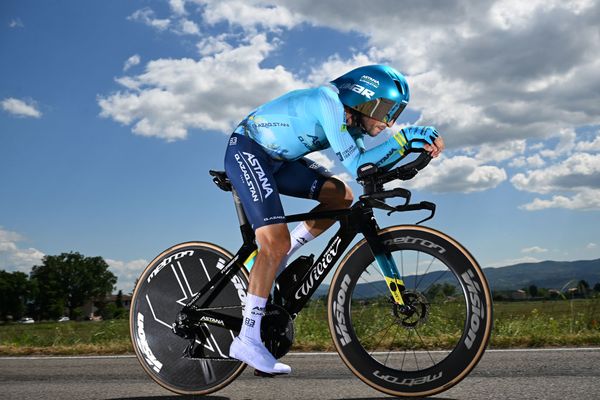The huge problem with modern tyres and wheels
Alex Paton explores why tyres and rims are both getting wider and wider, the headaches over hookless, and the issues surrounding safety and compatibility
GCN
The GCN team
'Carbon wheels are dangerous'. 'Wide tyres are crap'. 'Tubeless tyres will explode'. 'It's all just marketing hype and overpriced junk…'
That’s what you hear some people say about modern wheels and tyres, especially when you add hookless into the discussion. But is there any truth behind these wild statements? Or do we have nothing to worry about?
In this video from GCN Tech, Alex Paton looks to shed some light on the situation and make sure everyone stays nice and safe.
- Read more: Complete guide to road cycling tyres
Modern = wider
Modern wheels and tyres have been getting wider and wider for some time now, there's no doubt about it. Roll back the years to steel frames and downtube shifters and everyone used skinny 19mm tyres on road bikes. We then gradually saw 23mm become the standard, but these days we are seeing 28 and even 30mm used by the pros, and manufacturers are starting to make road bikes that can even fit 35mm tyres.
So what the hell is going on?
It’s almost like a battle between wheel and tyre manufactures, with each one going slightly wider to try and improve their product. As to who started this off, it’s a bit of a ‘chicken or the egg’ situation.

© GCN
Wider tyres create a more bulbous shape that has more flex
Wider rims change the way tyres lie, with a narrower U-shaped profile that can restrict the sidewall's ability to flex. Wider tyres create a more bulbous profile, but then this affects the aerodynamics of the wheel. So each keeps getting wider, almost to cancel the other out, and the entire cycle keeps going until we end up where we are now, with wider rims and wider tyres that anyone could have imagined.
- Read more: Thin vs wide: which tyre is right for you?
Where does hookless fit in to this?
The term hookless is in reference to the inner rim shape and simply means that the hooked shape, which was designed to help keep the tyre on the wheel, is no more, and is now just a straight edge. The idea is that it's stronger, lighter and more aerodynamic, while also being cheaper to produce and compatible with tubeless tyres, which have also become more and more popular.
It’s at this point that things start to get complicated because the use of hookless rims puts additional stress on the tyre bead, and some tyres are not designed to cope with that force. The ones that are need to remain within the pressure limit of 72 psi, which is for many the biggest issue with hookless.

© GCN
Hookless rims feature straight sides
The safety concerns have led to compatibility issues, with certain tyre brands unwilling to risk stating that their products can be used with hookless rims. There are some independent organisations trying to help sort this mess out, but when it comes to the consumer, the advice from manufacturers seems to be to go a tyre size or two wider, which requires less pressure, but then adds weight and affects aerodynamics.
When you think back to what hookless was developed to do, it does seem like solutions are being created for problems that didn't exist for many people.
Solutions
The most important thing to remember about all of this, is that safety comes first. Always follow the limits and guidance on products and if you end up with two products with conflicting maximal limits, always stick to the lower of the two.
If you are buying new wheels and tyres, make sure to check compatibility for what you are buying, make sure it matches up to your needs, and is actually going to fit your bike set-up.
If you want to go up a size in tyre width to help improve your comfort and grip then make sure the tyre is designed to work with the inner rim size of your wheels. This information is on most reputable brands’ packaging and websites. It’s also where your friendly local bike shop can help you out.









.jpg?w=600&auto=format)
